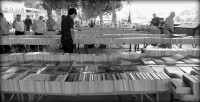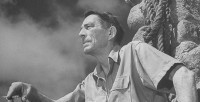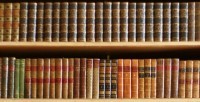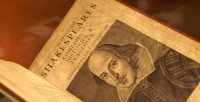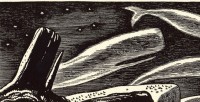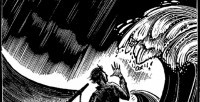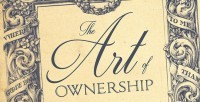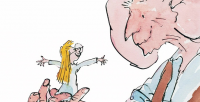You've no doubt heard the great news that Assembly Bill 228 has been introduced by California State Assembly Members Gloria and Chiu. If passed, this bill will provide significant relief from the most troubling and onerous provisions of AB 1570, California's new autograph law. The ABAA, IOBA, PBA Galleries, and The Comic Book Legal Defense Fund, The Manuscript Society, The Ephemera Society, The Professional Autograph Dealers Association, Horror Writers Association, The Grolier Club, Biblio and The Easton Press have formally expressed support for this pending legislation in the linked letters. The legislative process is long and complicated. Bills pass through policy committees in each house of the legislature and the process takes many months. What this bill needs to help ensure that it becomes law is your support. We encourage members and interested parties to write a letter of support for AB 228 addressed to the bill's primary author: Assemblymember Todd Gloria P.O. Box 942849 Sacramento, CA 94249-0078 You can also add your name and comments to the change.org petition. We'll keep you updated on progress here. [more Assembly Bill 228 Introduced to Address Consequences of California Autograph Law]
On Collecting Books
Bookseller Ed Smith (Ed Smith Books) interviewed Kurt Brokaw, a professor and film critic, who likes to moonlight as a rare bookseller (specializing in noir paperback originals) on the streets of Manhattan. I got to know Kurt Brokaw through a mutual friend. When I was in Manhattan for a movie memorabilia auction at Bonham's that I'd partly consigned, I stopped at his weekend table of 1940s paperbacks and earlier pulp magazines. He often sets up outside Zabars at 80th & Broadway, or further down Broadway in Lincoln Center. He's the only bookman doing high end vintage paper on the street that I've ever met, and he explains an actual New York City book law from the 1890s that gives him the legal right to vend written matter on NYC sidewalks without a license. This 6-minute spontaneous and unrehearsed interview should be of interest to collectors. (Photo by Lynda Bullock/Flickr via cc license) [more Selling Rare Books on NYC Sidewalks]
“The greatest beauty is organic wholeness, the wholeness of life and things, the divine beauty of the universe.” -- from “The Answer” by Robinson Jeffers Within his lifetime, the work of Robinson Jeffers (1887-1962) was at various points revered, deliberately shunned, and generally neglected. In 1932, the poet was featured on the cover of Time magazine; but by 1948 his publisher, Random House, saw fit to add a “Publisher's Note” to his collection The Double Axe in which they expressed their “disagreement over some of the political views pronounced by the poet in the volume.” By the time of his death he had already passed into irrelevance, with younger poets such as Kenneth Rexroth attacking him and his work rarely anthologized. Still, his work was read and studied by other poets such as Gary Snyder (who noted his work showed “a profound respect for the non-human”) and his greatest disciple William Everson, and today, despite his continuing marginalization in some circles as a “California poet,” his work continues to reckoned with. Critic and Poet Laureate of California Dana Gioia, a great modern-day champion of Jeffers, has noted, “I consider Jeffers the most important American poet in the western third of the country—the great poet of the West.” Gioia adds, “He's a titanic if singular figure,” and therein lies some of the difficulty in dealing with Jeffers. Jeffers' theory of “inhumanism,” which the poet described as being “based on a ... [more California’s Wild Coast: Poet Robinson Jeffers]
Thanks to the ABAA for hosting the first (but not last) networking event for women in the book trade at this year's Boston Antiquarian Book Fair, the inaugural program in the ABAA's Women in Bookselling Initiative. The Boston gathering was inspired by a series of lively events in London this year, the first one organized by the women of Maggs, with later events sponsored by Peter Harrington, Quaritch, and (next up) Daniel Crouch. We were also motivated by ongoing conversations about the place of women in the trade at the Colorado Antiquarian Book Seminar (CABS) and York Antiquarian Book Seminar (YABS) this summer. Ashley Wildes (Between the Covers), Alanna Miles (Caliban), and Kim Schwenk (Lux Mentis) Our point of departure is this: while individual women have played key roles in the American book trade for at least a century, they remain under-represented at the top. The 2016 ABAA directory lists only 62 women as full members. What can we do to make the trade more inclusive and welcoming, and to encourage women booksellers to aim higher? How can we see more women represented on the ABAA Board of Governors? The recent adoption by the ABAA membership of a Code of Conduct addressing sexual harassment was a necessary start. In the larger picture, we hope to encourage collaboration and mentorship between women at different levels of the trade, all of whom face the daily challenge of “not looking like a rare book dealer” in a profession where the ability to project authority i... [more ABAA Women in Bookselling Initiative Launches in Boston]
The Antiquarian and Rare Bookseller Today: The Decline of the On-the-street Bookshop and Its Consequence Overheard at a recent book fair, one bookseller to another: “Business used to be a lot more fun.” The role of the old, rare, and antiquarian bookseller has changed greatly in recent decades, from a rich brick and mortar presence in every major city of the U.S. to almost no physical bookshops on the street today. In the 1970s and '80s, there were important bookshops centrally located in every major city of the United States. Many of these shops gathered in “book rows.” In New York, for example, there were dozens of bookshops on 4th Avenue alone. Presently there are, according to the ABAA, two large full-service antiquarian books in New York City: Argosy and the Strand. Of the 39 New York City ABAA booksellers, 29 are open by appointment only; of the 10 remaining who keep open business hours, six have offices, not storefronts. There are, of course, other booksellers, mostly used and out-of-print dealers who are not in the ABAA, but the ratio is undoubtedly similar to the above. At present, there is no large brick and mortar full-service antiquarian or rare bookshop on the streets of Chicago, San Francisco, Los Angeles, Washington D.C., downtown Philadelphia, or Dallas. Booksellers now operate from home or office with few or no walk-in clients. The ability to meet potential new clients is limited to exhibiting in the expensive and competitive antiquarian book fair cir... [more Book Collecting in the United States (Part 2)]
The focus around the office and blog has been the Boston Antiquarian Book Fair for the past few weeks. Now that the fair is over, here's a roundup of the big stories book collectors are talking about. Shakespeare Canon Expands, and Co-Authors Named -- The biggest news in some time comes from the editors of the New Oxford Shakespeare, who have concluded that up to 17 of "Shakespeare's" plays were written collaboratively, and have named Christopher Marlowe and Thomas Kidd as official co-authors of several plays! Not only that, but the "Shakespeare" canon has been expanded to include several additional plays, including the previously anonymous Arden of Faversham and The Spanish Tragedy, now thought to have been a collaboration between Thomas Kidd and Shakespeare. Read more... Thomas Beckett's Personal Book of Psalms Found -- Do we need to add "alledgedly"? Former President of ABAA Robert D. Fleck Dies -- We collected some touching tributes from members here... F. Scott Fitzgerald's Last Unpublished Stories Coming to Print in 2017 -- Some unpublished stories and pieces from the later part of his career when he writing in Hollywood and lacking in confidence. Dealers Unite Against Thefts of Rare Books -- The New York Times shone a light into the world of rare books and showcased how effective the "tight community of bibliophiles and antique book dealers" are at shutting down the potential market for stolen rare books. ASU Libraries Acquire Collection of Early Renaissance Texts -- C... [more Rare Books News]
In February of 1964, in my freshman American Literature Survey Class, I first encountered Herman Melville's Moby Dick. Our teacher was Daniel Hoffman, a worthy poet, critic, and educator who'd go on to publish two dozen books, one of which, Poe Poe Poe Poe Poe Poe Poe was nominated for the National Book Award. All in all, a serious customer. At that time, furthermore, he was 41 years of age, at the height of his powers as a teacher. Sparks flew as he paced in front of his desk, expounding on Jonathan Edwards, Fenimore Cooper, Poe, the Transcendentalists – inspiring us, challenging us, prying us loose from our childish preconceptions, frightening us, taking us places no teacher had ever taken us. And then we got to Moby Dick. He started right off by reading us a chapter. As I recall it was “The Honor and The Glory of Whaling” – one of those intermediary chapters that expands the scope of the story through space and time to the realm of gods and myths. It was the first time and, until just recently, the last time I'd ever heard the book read aloud. And of course, it had a profound effect. With those words still ringing in our ears, he went on to demonstrate how each of the themes resonated back through the book, strands in a mighty cable such as the one Father Mapple spins in his sermon. We youngsters, of course, were utterly gobsmacked by this performance, for it was as much a performance as it was a lecture. At the end of that first hour, Professor Hoffman told us pro... [more A Boy & His Book: Moby Dick]
“Lynd Ward was way ahead of his time, a visionary, in understanding the importance of the book as an object, as a container of a kind of content. His books were made with great attention to that container and he worked within it as precisely as a concrete poet works with language.” — Art Spiegelman The so-called graphic novel -- which may be no more than a successful rebranding of comics -- has become a very popular genre, with its own bestseller list in the New York Times, and growing shelfspace in new book stores. In light of this new-found prominence and respectability, it's interesting to look back at the precursors to the graphic novel, the stages the idea of the illustrated novel-length story went through before settling into the form we current know. One of these stages was the wordless novel, in particular the work of American Lynd Ward, who was both an influential illustrator of children's books (he won a Caldecott Award) and a pioneer of the wordless novel. Lynd Kendall Ward grew up in Chicago and studied Fine Arts at college in New York in the early 1920s. A year studying wood engraving in Germany in 1926-'27 led to his discovery of Frans Masereel's wordless novel The Sun (1919). Told in a series of woodcuts without any words, the concept spoke to the young American artist. He returned to the U.S. in late 1927, where he began his career as an illustrator by working on drawings for Dorothy Rowe's The Begging Deer: Stories of Japanese Children. In 1929, Ward ca... [more Lynd Ward and the Wordless Novel]
Bookplates are fascinating corner of the literary world. If your only exposure to bookplates are the rather anodyne mass-produced examples some modern bookstores sell, you may not appreciate the individuality, wit, and artistic skill that went into bookplates in years gone by. A new exhibition attempts to showcase the best examples for bookplates from centuries past. The Rosenbach of the Free Library of Philadelphia presents The Art of Ownership: Bookplates and Book Collectors from 1480 to the Present, from September 21, 2016 through January 17, 2017. Edwin Davis French (1851–1906), bookplate of William Keeney Bixby. Engraved print and black printing ink on paper. New York, 1906. In Nathaniel Hawthorne (1804–1864), The scarlet letter: a romance ... Boston: Ticknor, Reed, and Fields, 1850. The primary function of a bookplate is simply to indicate the owner of a book, yet book collectors across the centuries have commissioned ornate and evocative designs that do much more than designate property. From coats of arms and etched portraits to scenes of libraries and fantastical creatures, these miniature artworks may reveal a great deal about the ancestry, occupation, artistic taste, or philosophy of the men and women who used and circulated them. The Art of Ownership features beautiful and curious specimens from five centuries of books in the Rosenbach's collection, along with examples from the Rare Book Department of the Free Library of Philadelphia, the University of Delawar... [more The Art of Ownership: Bookplates]
Happy Roald Dahl Day! The renowned British children's book author, screenwriter, and WWII fighter pilot, was born one hundred years ago, today (September 13, 1916). Dahl (or more accurately his books) has been in the headlines often in 2016, first as Steven Spielberg's adaptation of Dahl's classic The BFG hit the theaters and again after the death of the actor Gene Wilder, whose most-celebrated role was as the eccentric Willy Wonka in the 1971 film adaptation of Dahl's Charlie and the Chocolate Factory (renamed Willy Wonka and The Chocolate Factory). Many book collectors doubtless brought their children (or grandchildren) to see The BFG and/or played Wilder's classic Willy Wonka and the Chocolate Factory (or at least watched him sing “Pure Imagination” on YouTube -- scroll down to play the video for a little music while you peruse the rare Dahl books on this page) after Wilder's passing, and have been reading Dahl stories at bedtime. However, if you have a Roald Dahl first edition or two — especially of his earlier books — you might want to make sure they're safely out of reach on a high shelf until the next generation has learned to handle rare books properly. Roald Dahl joined the Royal Air Force at the beginning of WWII. After surviving a crash that fractured his skull and temporarily blinded him, Dahl became a fighter ace, before lingering headaches from his injuries forced him from the cockpit. Sent to the British Embassy on a diplomatic posting in 1942, Dahl was... [more Collecting Roald Dahl]


